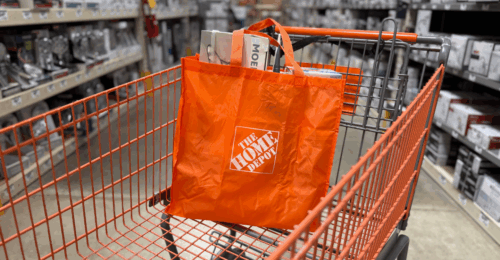
If you’re looking for a way to make your holidays more sustainable and more affordable, then consider making the switch from incandescent to LED holiday lights this year. Whether you have modest holiday visions, or you like to light up the neighborhood, the lights you use can make a real difference in your carbon footprint and help reduce your energy bill this holiday season.
How to tell what lights you have now
If you aren’t sure what kind of lights you have, there’s a very easy way to tell. When they are plugged in, incandescent bulbs will be warm or hot to the touch. LEDs, on the other hand, will stay cool. This is because LEDs are dramatically more efficient. They don’t allow much energy to escape, whereas incandescent bulbs lose about 90 percent of their energy in the form of heat.
LEDs save energy and reduce utility costs
By switching from incandescent bulbs to LEDs in your holiday lights, you can use 90 percent less energy. But what does that even mean? Consider that on a set of string lights, the difference in energy requirements for each tiny bulb is as follows: .0408 kWh per incandescent vs. .0022 kWh per LED. Hypothetically, if you run your lights six hours a day for thirty days and are charged the U.S. average price of $.13 per kWh, a single incandescent bulb will cost about $.95 cents a month while the LED costs about $.05 cents. That’s may not seem like a big difference, until you consider how many bulbs are on each string of lights in your house.

LEDs can help reduce carbon emissions
If your biggest concern is reducing your holiday carbon footprint, then LED lights are definitely the way to go. In fact, you can substantially reduce your emissions by choosing LEDs. The reason is that incandescent bulbs emit over four times the CO2 of LEDs.
To understand how that amount is configured, we look to the U.S. Department of Energy. According to the DOE, approximately .85 pounds of CO2 are emitted for every kWh of electricity produced in the U.S. Given the wattages listed above, we can deduce that a string of 100 incandescent bulbs emits 17 pounds of carbon compared to the 4 pounds emitted by LEDs. Again, that’s a big difference.
A 2020 study by Arcadia energy revealed the massive impact that incandescent bulbs can have on carbon emissions. Supposing half the households in the U.S. that celebrate Christmas were to use nine strings containing 100 incandescent bulbs apiece, the associated total carbon emissions for the month of December would be a startling 2.4 million metric tons. Meanwhile, if those same households switched to LEDs and used an identical amount of lights, the carbon emissions drop to 620,000 metric tons. That’s because LEDs use a fraction of the energy and emit a quarter as much carbon as that of incandescents.

Save energy without compromising holiday spirit
Suppose you are a stickler for traditional lights because you believe that LEDs can’t possibly be as twinkly or soft. If so, now is the time to rethink your options, because LED technology has improved vastly over the last few years. You can now purchase these energy-saving bulbs in different shades of white, which let you match your old bulbs.
It helps to understand the different options. For a warm, golden-hued light reminiscent of candlelight or more traditional bulbs, choose warm white LED bulbs. Cool white LEDs produce a white light similar to a fluorescent lantern and are often said to have a blue tint.
Shapes make a difference, too. Some LED bulbs have dome tops with either flat heads or softly rounded heads. Others are molded into the traditional teardrop shape. For the most part, for every traditional light you give up, there’s an LED version available.
Recycling old incandescent bulbs
Once you make the switch to LEDs, consider recycling your old incandescent string lights. Check with your local municipality. Many offer holiday light recycling during the months of November and December. If you can’t find anywhere local to take your old bulbs, check with national organizations like HolidayLEDs.







